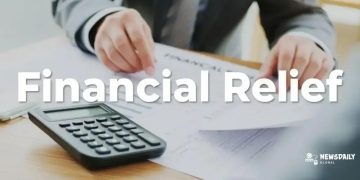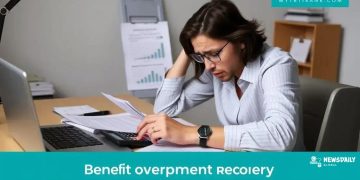DebtPlanning: Strategies to Take Control of Your Finances

Debt planning involves understanding your debts, creating a repayment strategy, and avoiding pitfalls by budgeting, building an emergency fund, and using credit wisely to maintain financial health.
DebtPlanning can sound overwhelming, but it’s the first step toward financial freedom. Have you ever felt trapped by debt? You’re not alone. Let’s explore how to tackle those financial challenges together.
Understanding the importance of debt planning
Understanding debt planning is crucial if you want to regain control over your financial life. When you know how to manage your debts, you can make better choices and avoid falling into financial traps.
Why is Debt Planning Important?
Debt planning allows you to prioritize your financial obligations. You can break down your debts into manageable parts and create a clear repayment strategy. This approach reduces stress and helps you focus on what really matters.
Key Benefits of Debt Planning
- Improved financial awareness
- Reduced anxiety about money
- Clearer goals for financial health
The process encourages you to track your spending and understand where your money goes. By doing so, you’ll identify unnecessary expenses and find ways to cut back. This can result in more money available for debt repayment.
How to Start Your Debt Planning Journey
To get started, consider listing all your debts. Include amounts, interest rates, and minimum payments. Knowing exactly what you owe is the first step. Once you have your list, rank them by interest rates or balance, depending on what works best for you.
Next, sit down and create a monthly budget. Having a budget helps you see how much you can allocate towards debt repayment. It also reveals possible areas for saving. Remember, your goal is to create a plan that is realistic and achievable.
Finally, be sure to revisit your plan regularly. Adjustments may be necessary as your financial situation changes. This will help keep your debt planning on track and ensure you stay motivated.
Identifying different types of debt
Identifying the different types of debt is crucial for effective debt planning. Not all debts are created equal, and understanding their differences can help you prioritize repayment strategies.
Types of Debt
There are generally two main categories of debt: secured and unsecured. Secured debts are backed by collateral, meaning they are tied to an asset. Unsecured debts, on the other hand, do not have any asset tied to them, making them riskier for lenders.
- Secured debts: These include mortgages and auto loans. If you fail to make payments, the lender can take the asset.
- Unsecured debts: Examples are credit card debt and personal loans. Since there’s no collateral, the lender relies on your creditworthiness.
- Student loans: Typically considered a separate category, these can be both secured and unsecured, depending on the lender.
Within these categories, debts can also vary in terms of interest rates and terms. For instance, credit card debt often carries higher interest rates than student loans. Knowing these differences helps you make informed decisions.
Recognizing Your Debt
To effectively manage your debt, start by listing all debts you owe. Include lender names, amounts, interest rates, and payment terms. This visibility gives you a clearer picture of your financial obligations.
Pay attention to high-interest debts, as they can accumulate quickly, making it harder to pay them off. You might notice that prioritizing high-interest debts can save you money in the long run.
Additionally, understanding the different types of debt you owe helps you in creating a solid repayment plan. By knowing whether you are dealing with secured or unsecured debt, you can choose the best strategy for dealing with each type.
Steps to create an effective debt repayment plan

Creating an effective debt repayment plan can turn your financial situation around. By following specific steps, you can manage your debts with confidence and clarity.
Step 1: List Your Debts
Start by writing down all your debts. Include information like the creditor’s name, total amount owed, interest rates, and minimum monthly payments. This list is crucial for understanding your total debt situation.
Step 2: Set a Budget
Once you have your debts listed, create a budget. A budget helps you see how much money you earn and how much you spend each month. From this, you can determine how much money you can allocate towards paying off your debts.
- Track your income and expenses for a month.
- Identify areas where you can cut back.
- Adjust your budget to free up more funds for debt repayment.
Sticking to a budget is vital. It allows you to allocate extra money towards your highest-interest debts first.
Step 3: Choose a Repayment Strategy
There are different ways to approach debt repayment. You might choose the snowball method, where you pay off the smallest debts first for quick wins, or the avalanche method, which targets the debts with the highest interest rates. Each method has its benefits, so pick one that fits your style.
Prioritizing payments effectively keeps you motivated. Each small success can boost your confidence as you pay off larger debts.
Step 4: Negotiate with Creditors
Don’t hesitate to reach out to your creditors. Sometimes, they are willing to negotiate better payment terms or lower interest rates. Just explaining your situation can lead to more manageable payments.
Being proactive about your debt repayment plan can yield positive results and help you regain control over your finances.
Step 5: Monitor Your Progress
Regularly review your debt repayment plan. Track how much you’ve paid off and celebrate your progress. Make adjustments if necessary to stay on track.
Monitoring your achievements keeps you motivated and highlights the effectiveness of your plan.
How to prioritize debts and stay motivated
Knowing how to prioritize debts is essential for effective debt repayment. By focusing on the right debts first, you can reduce stress and build momentum in your financial journey.
Understanding Debt Priority
Start by identifying which debts to focus on based on their interest rates and balances. High-interest debts can cost you more over time, so it’s wise to address them first. This can give you the best chance to save money in the long run.
Methods to Prioritize Debts
- Avalanche Method: This strategy suggests paying off the debt with the highest interest rate first. This minimizes the overall interest you pay and helps you become debt-free faster.
- Snowball Method: This method encourages you to pay off your smallest debts first. Getting small wins can motivate you to tackle larger debts.
- Hybrid Method: Combining the two methods can also work. Pay off a small debt while focusing on high-interest loans, balancing motivation with savings.
Choosing the right method depends on your personal preferences. Some people are motivated by quick wins, while others prefer to save more on interest.
Staying Motivated
Maintaining motivation is crucial when dealing with debt. Set clear, achievable goals. Track your progress by celebrating small victories, such as paying off a debt or reaching a savings milestone.
Visual reminders can also help. Consider creating a debt thermometer or chart to track how much you’ve paid off. Seeing visual proof of your progress can keep your spirits high.
Accountability and Support
Seek support from friends or family. Sharing your goals can provide encouragement and accountability. Joining a support group or online forum can also connect you with others who understand your journey.
Regularly revisit your plans and strategies. Adjustments may be necessary as your financial situation changes. Staying adaptable and committed will help you remain on track and motivated.
Tips for avoiding future debt pitfalls
Avoiding future debt pitfalls is vital for maintaining financial health and preventing stress. By implementing smart financial habits, you can stay out of debt and ensure a secure future.
Understand Your Financial Situation
The first step is to gain a clear view of your finances. Keep track of your income and expenses. This knowledge helps you make informed decisions and avoid overspending. Regularly reviewing your budget allows you to adjust when necessary.
Build an Emergency Fund
Having an emergency fund can prevent you from relying on credit in case of unexpected expenses. Aim to save at least three to six months’ worth of living expenses. This cushion provides peace of mind and safeguards against debt.
- Start small: Save a little each month.
- Set specific savings goals.
- Automate your savings whenever possible.
Setting aside money for emergencies can keep you from falling into debt due to unforeseen circumstances.
Avoid Impulse Purchases
Impulse buying can lead to unnecessary debt. Before making a purchase, ask yourself if it’s a need or just a want. Implement techniques such as the “24-hour rule,” which encourages you to wait a day before buying something expensive.
Using a shopping list while grocery shopping can also help you stick to necessary items and avoid unplanned purchases.
Use Credit Wisely
Be cautious with credit cards. When used responsibly, credit can be a helpful tool, but it can also lead to debt if mismanaged. Only charge what you can afford to pay off each month. Paying your balance in full can help you avoid interest charges.
Additionally, limit the number of credit cards you use. Managing too many cards can make it easy to lose track of payments, leading to missed deadlines and higher debt.
Educate Yourself on Financial Wellness
Knowledge is power. Take the time to learn about personal finance. Many resources are available online, including blogs, courses, and podcasts that offer advice on budgeting, saving, and investment.
Being educated about your finances allows you to make better decisions and recognize potential pitfalls before they become issues. Staying informed about financial trends can also help you navigate your financial future confidently.
In conclusion, managing your debt and ensuring a stable financial future is a journey that requires patience and planning. By understanding the different types of debt, creating an effective repayment plan, and staying motivated, you can take control of your finances. Additionally, implementing strategies to avoid future pitfalls will help you maintain good financial health. Remember, every small step counts toward freedom from debt.
FAQ – Frequently Asked Questions about Debt Management
What is the best method to prioritize debts?
The avalanche method focuses on paying off high-interest debts first, while the snowball method tackles smaller debts for quick wins. Choose one that motivates you the most.
How much should I save for an emergency fund?
Aim to save three to six months’ worth of living expenses to cover unexpected costs and prevent falling into debt.
What strategies can help me avoid impulse purchases?
Use the 24-hour rule to wait before buying non-essentials and make a shopping list to stick to what you truly need.
How can I use credit cards wisely?
Only charge what you can afford to pay off each month and avoid carrying a balance to prevent interest charges.






